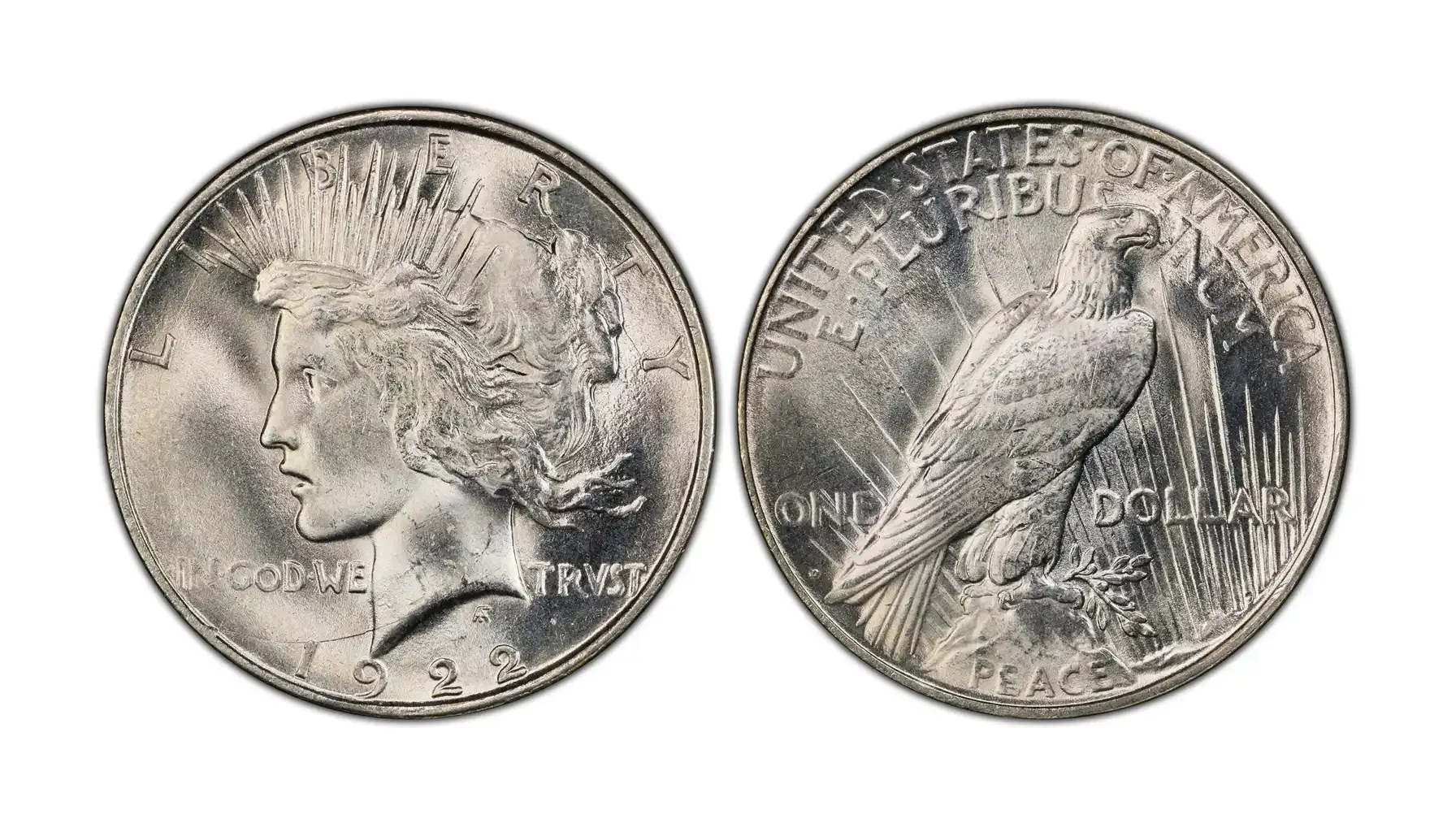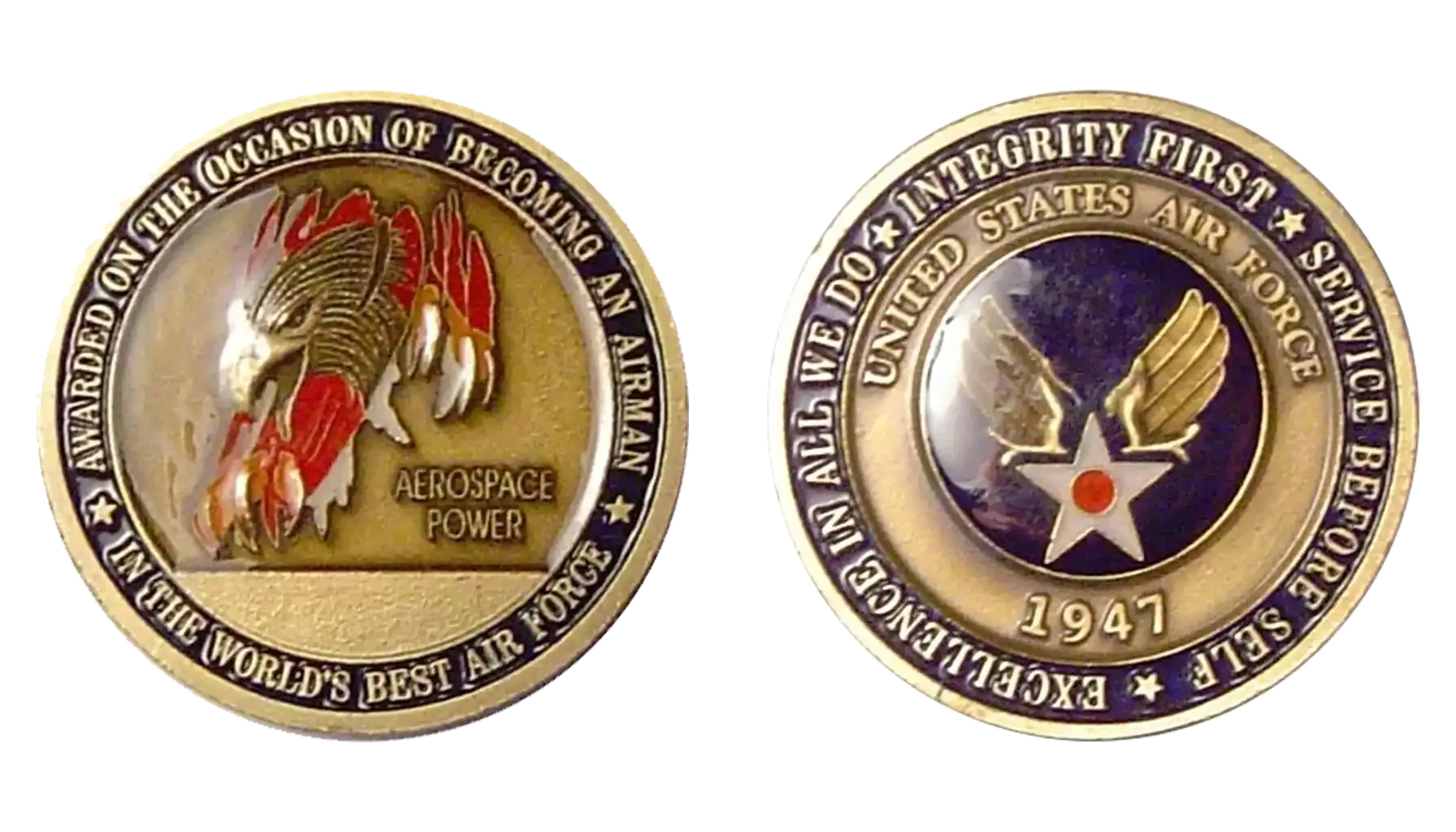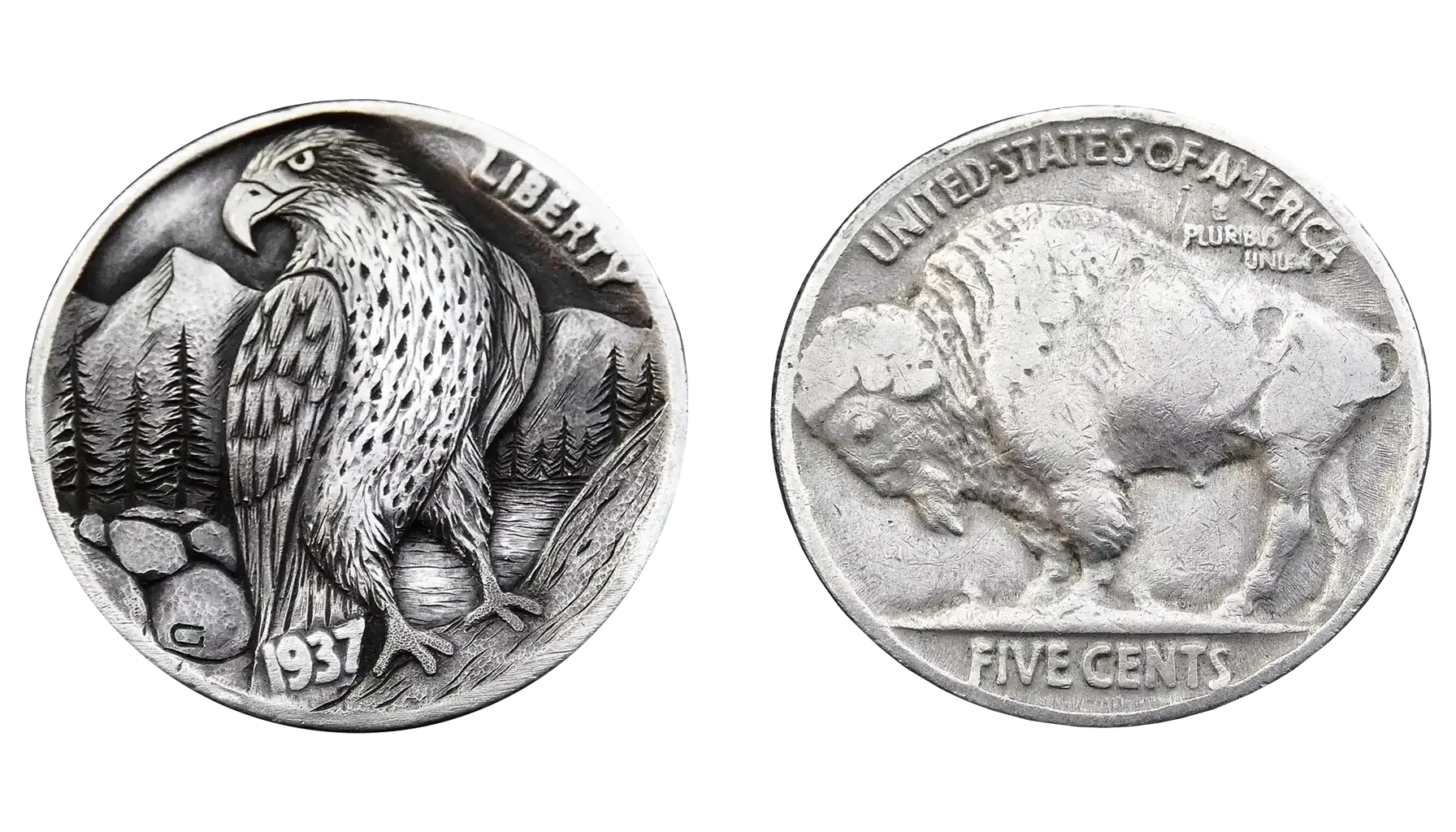Contents:
These days, even a small and, at first glance, unremarkable coin can hold ineffable value, and the 1856 eagle penny is just as precious as the most sought-after coins in the world. But behind the small cent and its modest denomination is a big history, promising important changes in the American monetary system. Short-lived and never released – this is what identifies this coin as unique and so exclusive.
Why does this particular 1856 penny create a buzz among collectors? Why do auction houses and private collectors around the world keep an eye on every 1856 flying eagle cent for sale and are willing to pay six-figure amounts to own it?
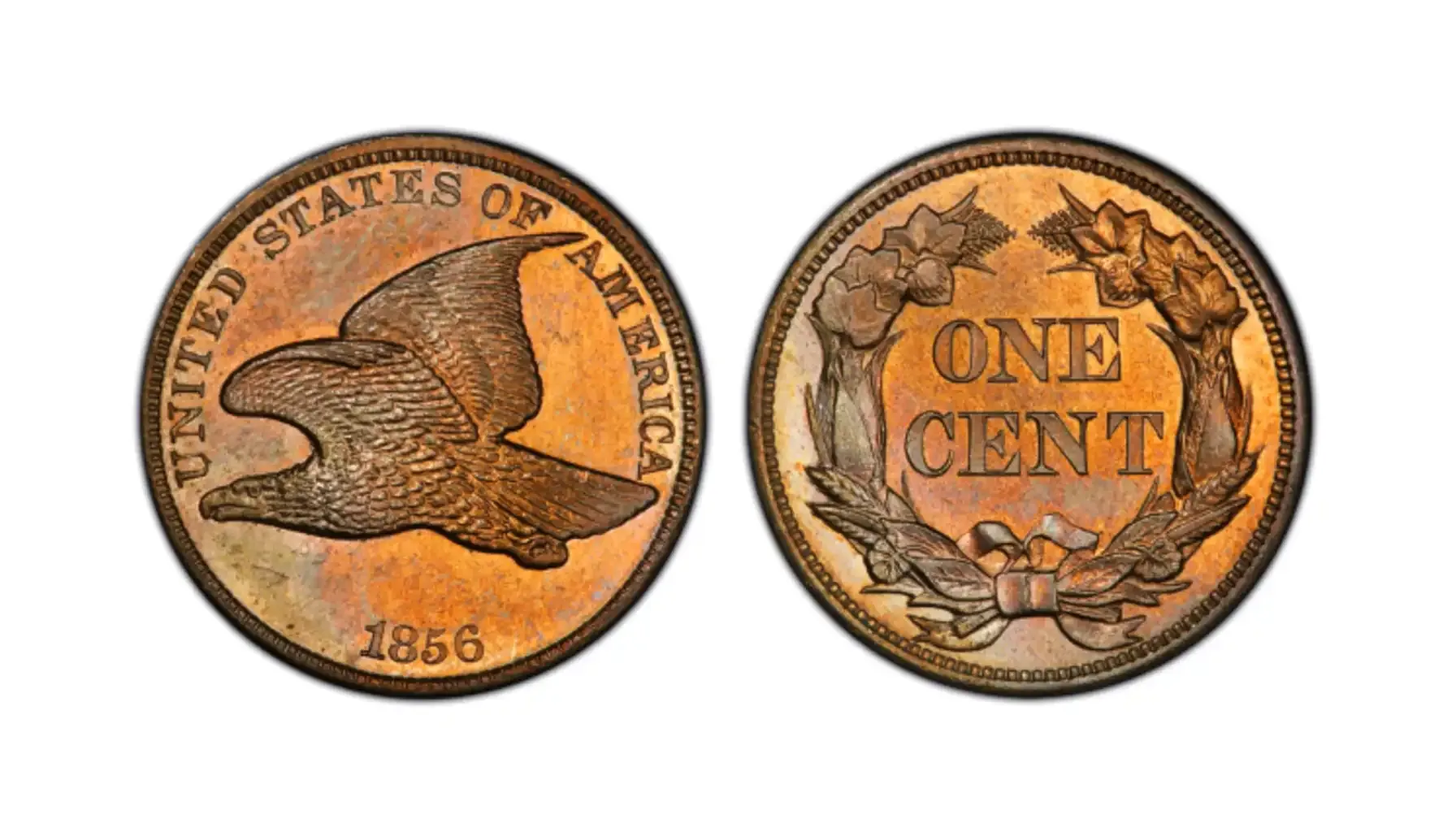
The Flying Eagle: History and Context
The story of a Flying Eagle began when the government pronounced the need to modernize the monetary system in the middle of the 19th century. Prior to its introduction, the large copper cents, which were bulky and expensive to produce, were no longer convenient and profitable for circulation. The reason was rather obvious: rising copper prices that could not have been handled.
James B. Longacre, the Chief Engraver of the US Mint at the time, was tasked with creating a completely new design. As such, he was mainly inspired by an earlier pattern used on the Gobrecht dollar, which is why he finally portrayed an elegant eagle in mid-flight as the centerpiece. This is how this pattern coin* was born.
*A pattern coin is a trial unit of currency minted to test a new design but never released into circulation.
What Makes 1856 Special
The year 1856 was experimental, for this is when it was decided that they should test a new design and size of coins. During that year, approximately 1,500 to 2,000 examples were minted, primarily to distribute to members of Congress and influential figures to gain support for the new cent design. These were not issued for mass circulation like half cents and, rather, had the character of proofs and the like. The positive reception eventually led to the official production for circulation in 1857.
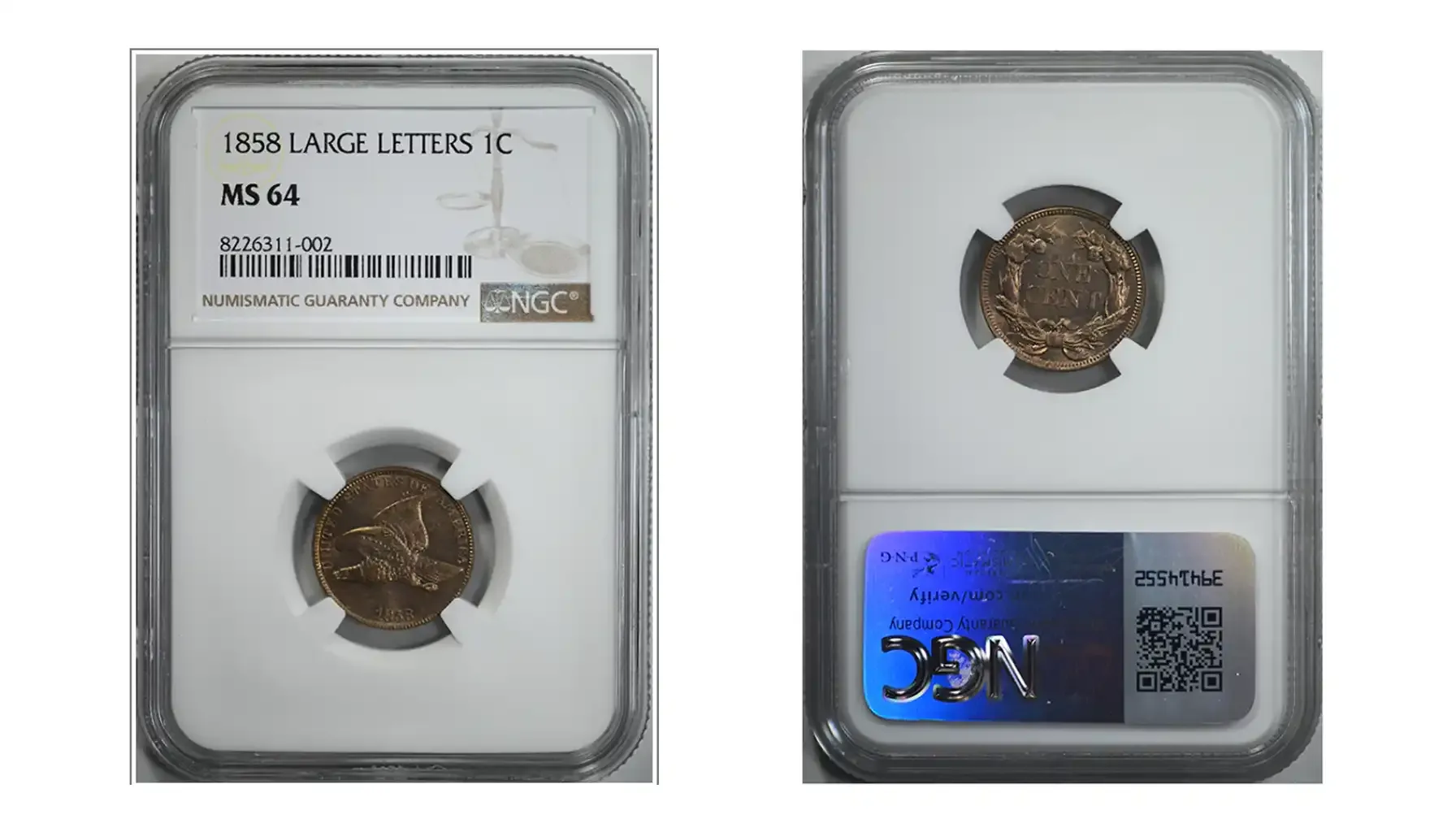
The 1856 one cent was the first small coin, and this makes it especially significant to collectors. It is widely regarded as the forerunner of all subsequent US cent designs from then on.
Eagle Penny Design
Obverse: The obverse features a majestic flying eagle designed by James B. Longacre. With its wings spread wide, the eagle symbolizes the strength and independence of the United States, a message that resonated strongly with patriots of the era. However, the intricate details of the design proved too difficult for the Mint to strike cleanly on a mass scale. As a result, the Flying Eagle design was short-lived and replaced by a new depiction, i.e., the Indian Head cent, beginning in 1859.
Reverse: The reverse shows a wreath of wheat ears, which symbolized fertility and prosperity. Inside the wreath is the face value of the coin, i.e., “ONE CENT”.
Designs are important, but so are their physical characteristics.
The Main Features of the 1856 Issue | |
Material | 88.0% copper, 12.0% nickel (copper-nickel alloy) |
Diameter | 19 mm |
Weight | 4.67 г |
Edge | Plain |
Amount Issued | 1,500 - 2,000 pieces |
Designer | James Longacre |
Mint Marks | None (produced in Philadelphia only) |
Types and Issues
The 1856 Flying Eagle cent is far from a single uniform coin. In fact, specialists recognize multiple varieties based on subtle die differences, cataloged by renowned numismatist Rick Snow. These varieties, designated as S-1, S-2, S-3, and so forth (up to S-10), help collectors distinguish between different production stages, die states, and striking methods of the 1856 pattern.
Beyond these, there exists another important distinction: some 1856 issues were struck as proofs, while others were regular business strikes.
1856 1C S-1 (Proof)
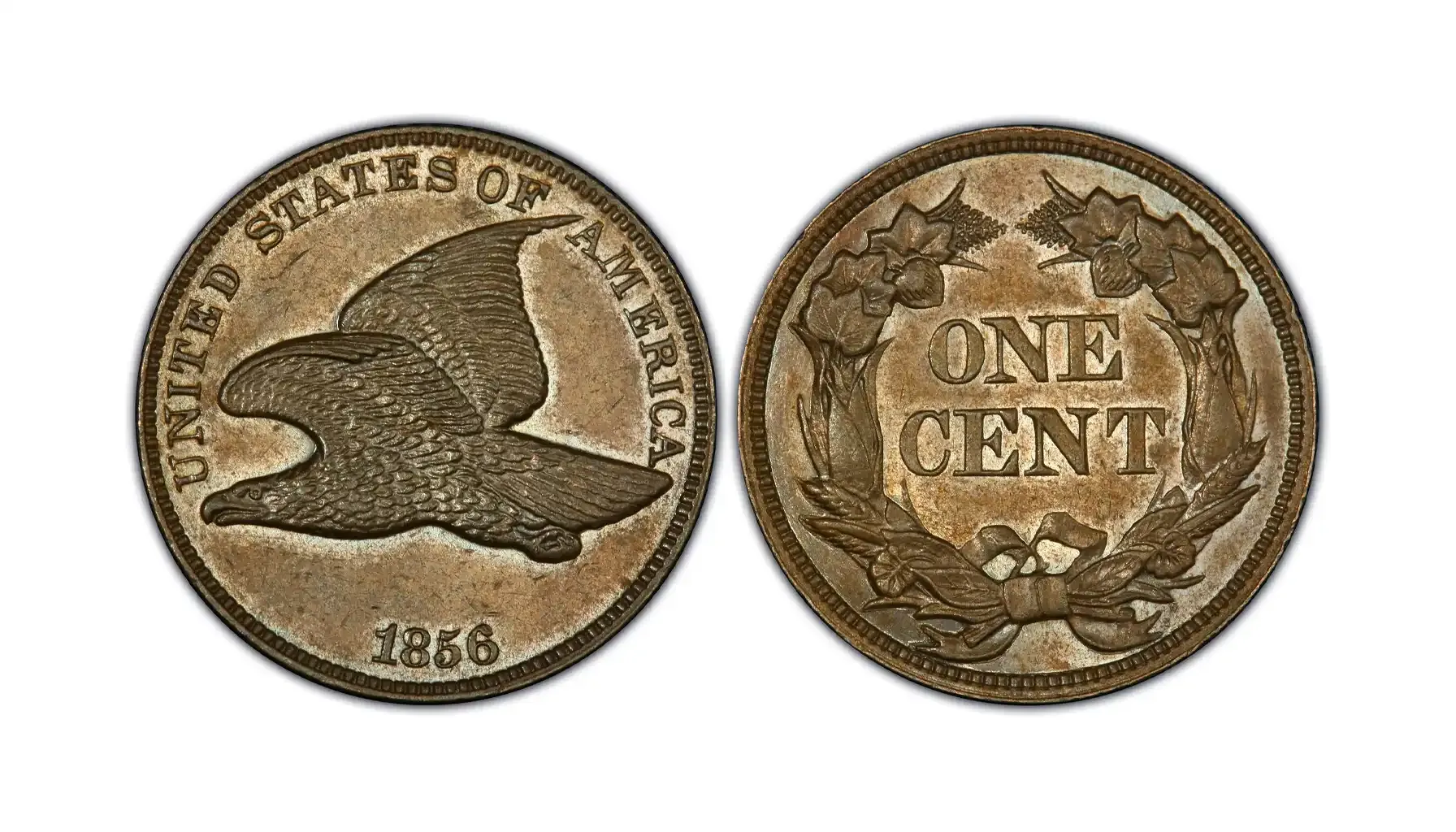
Auction Record: $41,125
Feature: Original proof strikes, bold details, polished planchets
The S-1 variety represents some of the earliest proof strikes of the 1856 Flying Eagle cent. Fewer than a dozen examples are believed to exist, making this an extraordinarily rare find. One of the key diagnostics of the S-1 is found on the reverse: the inscription "ONE CENT" appears slightly tilted compared to other proof examples.
1856 1C S-3 (Regular Strike)
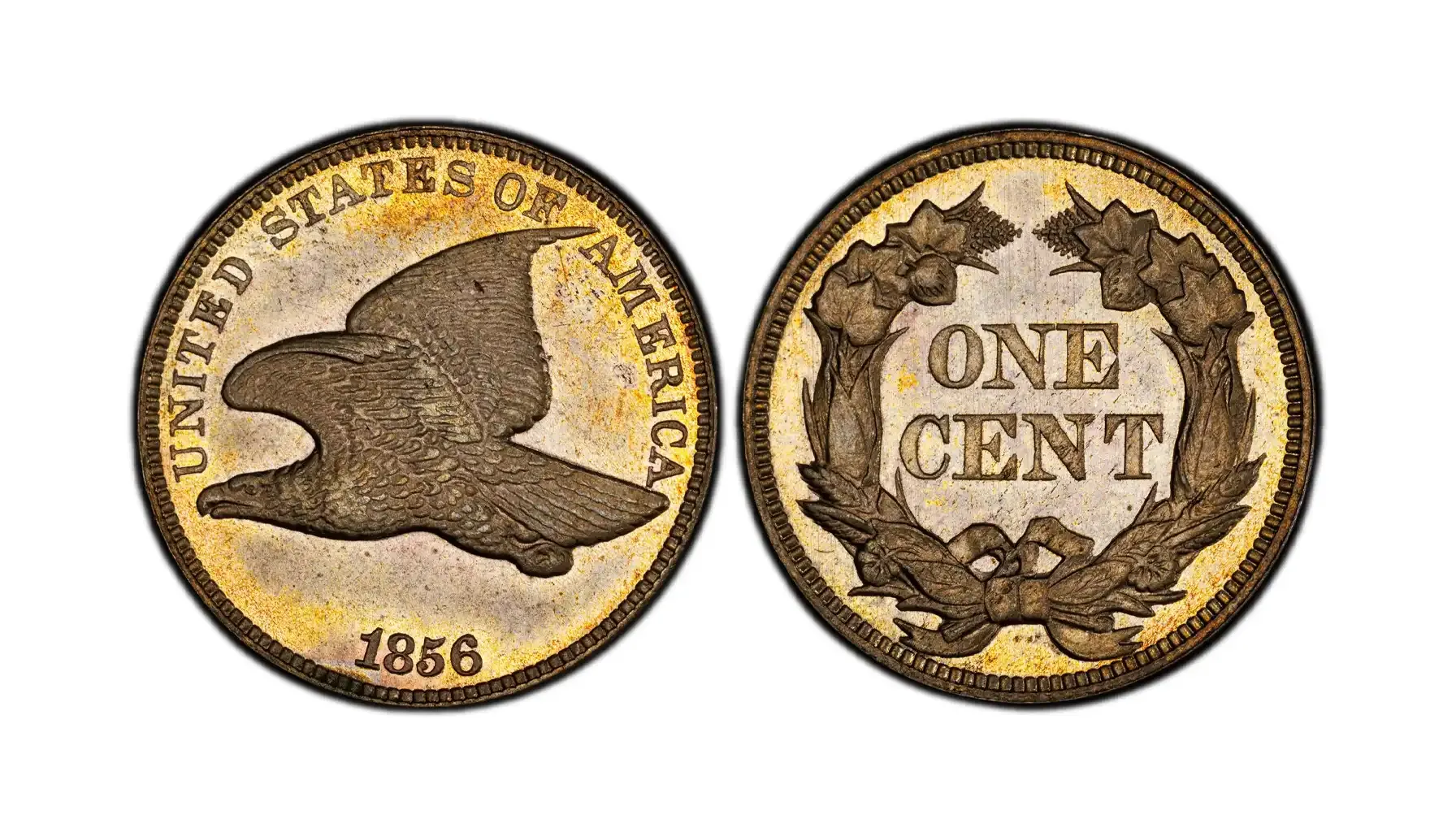
Auction Record: $192,000
Feature: Proof and circulation strikes, minor design shifts in the wreath
The S-3 is one of the most important varieties of the 1856 Flying Eagle cent because it is thought to be the original coin distributed to members of Congress and influential figures. Struck using a steam press, unlike the proofs, which were made with a screw press, S-3 examples often display minor strike doubling, a telltale sign of their business strike status.
Besides, there is usually a repunched "5" in the date that serves as a clear visual marker for collectors.
1856 1C S-9 (Proof)

Auction Record: $34,800
Feature: Extremely late state, heavy die wear, noticeably weak strike
The S-9 variety is another rare proof issue, distinguished by its deeply mirrored surfaces and, in some cases, cameo contrast between the raised devices and the fields. Struck later than the original S-1 proofs, they sometimes exhibit more die wear or slightly softer strikes, though.
1856 Flying Eagle Penny for Sale: Value and Places to Find
The 1856 one cent Flying Eagle remains one of the most expensive US coins today, especially in excellent condition (just like 1921 US Dimes, by the way. The original 1856 penny flying eagle may be worth up to $100,000 and more, depending on the condition of the coin, its type, and preservation.
Here are the general 1856 flying eagle penny values explained:
Good (G+) | $10,000 – $25,000 |
Very good (VG+) | $50,000 – $80,000 |
Excellent (XF+, AU+, MS+) | $100,000+ |
*Auction prices are generally higher, and they cannot be predicted but are dependent on more subjective factors instead.
Where to Find the 1856 Cent?
Auctions: Well-known sites, e.g., Heritage Auctions and Stack's Bowers, regularly offer rare specimens, among which you may find a long-awaited coin.
Internet sites and fairs: Sites like eBay and Catawiki may also offer Flying Eagle for sale.
Local numismatic exhibitions and coin shows: Coins presented at specialized exhibitions like New York Coin Shows often undergo strict authentication tests, making them more reliable for purchase.
Attention! Counterfeit Detected!
It is important to note that genuine Flying Eagle cents are frequently the target of counterfeiting. We believe that it is better to be safe than sorry, so we recommend that you consider using the Coin ID Scanner app for your collection. With this app, you can scan any coin to verify its authenticity and learn more about its main characteristics, historical background, and market value.

If you are a collector looking to add one of the rarest coins to your collection, the 1856 Flying Eagle Cent is an instance that is certainly worth its price. However, be prepared that its value is really high, and finding it is not an easy task.

